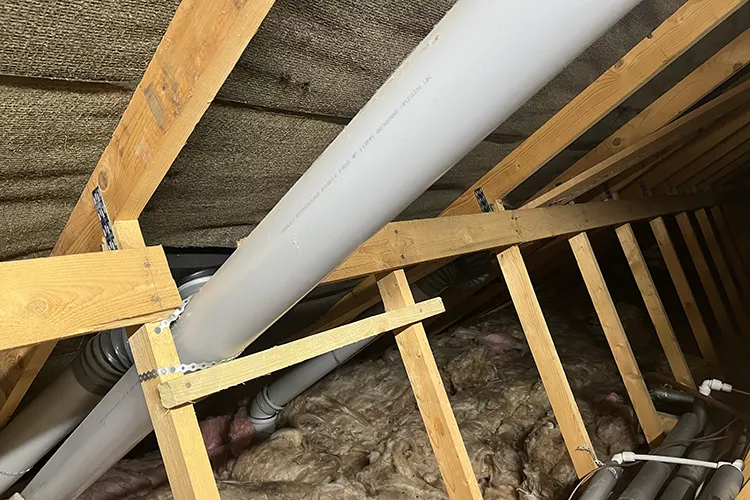Thursday February 22nd 2024

This View has been written by Brett Ferguson, a Chartered Surveyor in the Perth office of DM Hall Chartered Surveyors.
It is hardly surprising in a climate in which homeowners are continually being advised about the urgency of taking green measures in their properties that insulation should be high up on their list of priorities.
And the arguments for taking sensible steps are difficult to ignore. More than 50% of all energy produced by humanity is lost as heat and by reducing the amount of waste heat going into the environment, we can save money and improve sustainability.
But there are ways of making improvements, and one of the most promoted at the moment – especially as we suffer another miserable winter – is spray foam insulation for roofs.
A quick Google or Facebook search will throw up countless companies offering this method as a quick and easy solution to heat loss in the home. Many others try to attract customers by the dubious methods of cold calling.
The simple advice for homeowners if they find themselves considering spray foam insulation as the answer to their energy efficiency problems: Don’t.
Installing spray foam within a property’s roof void significantly reduces airflow in and out, trapping moisture and increasing the risk of condensation. Most roofs in Scotland are constructed with timber. Timber and elevated moisture levels will lead to decay over a period of time.
This poses a risk to the structural integrity of the roof, considerably reducing the life expectancy of the roof structure. Furthermore, the presence of spray foam conceals the roof timbers from view, meaning such defects could go un-noticed before the extent of the problem is realised leading to costly remedial repair works.
It is an unregulated field with installers either not aware of the consequences of such products or they are out on what can only be described as a ‘get rich quick scheme’, charging thousands of pounds to install these products which they will have no obligation to rectify at a later date, if, that is, they can be located or contacted afterwards.
One of the arguments used to persuade people to sign up for a course of treatment is that there is moisture in the roof space. Even if this is so, the solution to moisture within a roof void is often not insulation but improved ventilation.
That is why the traditional method of dealing with roof spaces is to install the insulation on at ceiling joist level and have gaps in the eaves and/or ridge to allow air to circulate throughout the space.
Furthermore, the majority of mortgage lenders will refuse or restrict lending where spray foam insulation has been installed, significantly reducing the property’s value where it is deemed not suitable for mortgage purposes.
It is not unknown for people who have spent, say, £5,000 on having their roof sprayed to subsequently have to shell out £25,000 -£30,000 for a new roof in order to make their property mortgageable again.
On top of that, the process itself is often coarse and messy. There are instances where unsuitable contractors have covered the entire space in foam – including the suitcases and Christmas decoration boxes stored in the attic.
Beware of cold callers offering such products. If it sounds too good to be true, often this is exactly the case. Before carrying out any home improvement involving new or seemingly innovative products, consult a professional for advice.
Tweet Share on Facebook